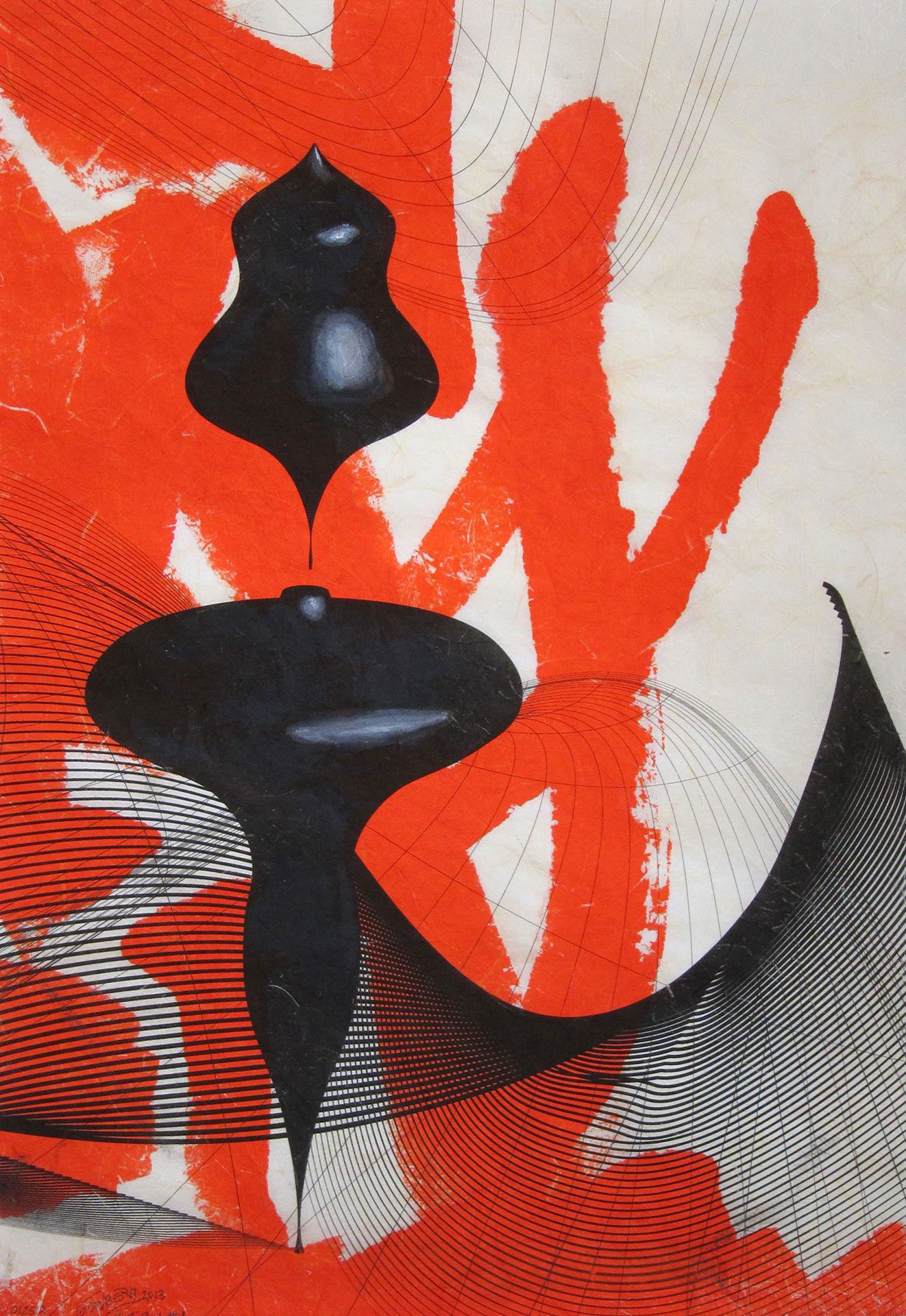SHODO SERIES
2005-2013
view works on paper
The incorporation of sumi ink into my work began in 2005, while I was working towards my MFA at Bowling Green State University. A printmaker named Claudio Orso, who was a fellow graduate student, asked me if I had ever worked with sumi ink, and I told him I had not, so he gave me some of his to try out. After seeing the rich red tones, and the way the ink lay on the paper, I was hooked.
My maternal grandmother, Kimiye Ebisu, was a master calligrapher originally from Japan. She moved to Honolulu on her own at the age of 16. I can remember visiting her in Hawaii once, and showing her the calligraphy set I had bought, intending on teaching myself Shodo, the art of Japanese calligraphy.
I was surprised when she became angry at me, proclaiming “you cannot learn without a sensei!” I then recalled hearing stories of her at the kitchen table for hours every night, writing a single character, and crumpling it up, over and over again for hours, until it was to her liking.
I realized, with the thousands of characters used in Japanese calligraphy, it would be impossible to do the art of Shodo justice without devoting a massive amount of time, so I ended up using the materials not to create real Kanji characters, but to invent my own gestural marks, which then would be the basis for digitally-composed counterpoints. The paper used in these works is Kinwashi, a handmade Japanese hemp paper, whose name means ‘golden fibers’.
In 2011, I began a series of works entitled “New Plastic Shodo”, whose name was inspired in part, by Mondrian’s essay “The New Plastic in Painting”:
In ”The New Plastic in Painting” (1917), Mondrian described painting as ”….gradually turning away from the natural: life is becoming more and more abstract.” In this historical situation, Mondrian was looking for some plastic equivalent of modernity, a dynamic equilibrium. Naturalistic art could not do justice to his vision. What was wanted, rather, and what Mondrian wanted to provide, was a new art for a new man. ”It is from the new man, emerging from worker, bourgeoisie, and aristocracy but altogether different from them, that the New Plastic must arise and to whom it belongs. Only the new man can realize the new spirit of the age as beauty, both in society and in plastic expression.” Source: “Make it Modern, Make it Plastic”, New York Times.

My late grandmother Kimiye (left) trying out my digitizing tablet during a visit in 2005. Right: my mother Kikyue and Kimiye together in their birthplace of Honolulu.
The works also incorporate a 3D computer shading model known as “plastic shading”, which manifests itself in rendered volumetric forms which are created through the revolution of gesturally-drawn marks in 3D space. The marks are drawn on a graphics tablet in reaction to the original physical ink markings, overprinted using a modified archival inkjeter. The forms are an expansion on the “volumetric gestures”, which have appeared as wireframe forms in earlier works. Thus the reference to “New Plastic” in the title of this series is a double-entendré of sorts. The Shodo in these works is not intended to mimic actual Kanji, it is my own visual language and a homage to the calligraphy which inspired it. The series is ongoing, and new works will be added to this post as they are created.

